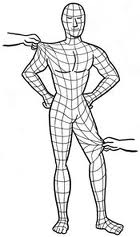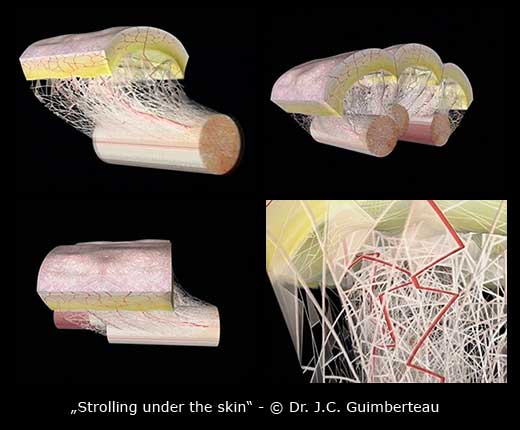 Integrated Fascial Releasae
Integrated Fascial Releasae
What is Fascia?
Fascia is a specialized connective tissue layer surrounding muscles, bones and joints and gives support and protection to the body. It consists of three layers - the superficial fascia, the deep fascia and the subserous fascia. Fascia is one of the 3 types of dense connective tissue (the others being ligaments and tendons) and it extends without interruption from the top of the head to the tip of the toes (1).
Fascia is usually seen as having a passive role in the body, transmitting mechanical tension, which is generated by muscle activity or external forces. Recently, however some evidence suggests that fascia may be able to actively contract in a smooth muscle-like manner and consequently influence musculoskeletal dynamics (2).

Obviously, if this is verified by future research, any changes in the tone or structure of the fascia could have significant implications for athletic movements and performance.
What is Fascial Release?
Fascial release is a style of bodywork which focuses on the fascia. According to practitioners who utilize this modality, the fascia can hold a great deal of pain, tension, and strain which can contribute to soft tissue pain. By releasing the strain on the fascia, a massage therapist hopes to sooth soft tissue pain and increase freedom of movement for the client.
This type of massage therapy is part of a larger family of modalities known as soft tissue therapies. Soft tissue therapy focuses on pain, injury, and strain in the soft tissues of the body. Most therapists trained in this modalities treat the soft tissue system as a complete unit, stressing the idea that the body must be treated as a whole in order to address the primary complaints of clients. Forms of fascial release are integrated into a variety of massage treatments, ranging from sports massage to deep tissue massage, and one advantage of fascial release is that people can perform it on themselves, with the proper training.
More info on the treatment coming soon...
Refrences
1) Scanlon, V.C., and Sanders, T. Essentials of anatomy and physiology, 3rd edition. Canada: F.A. Davis Company. 2002
2) Schleip R, Klingler W, Lehmann-Horn F. Active fascial contractility: Fascia may be able to contract in a smooth muscle-like manner and thereby influence musculoskeletal dynamics. Med Hypotheses. 65(2):273-7. 2005

